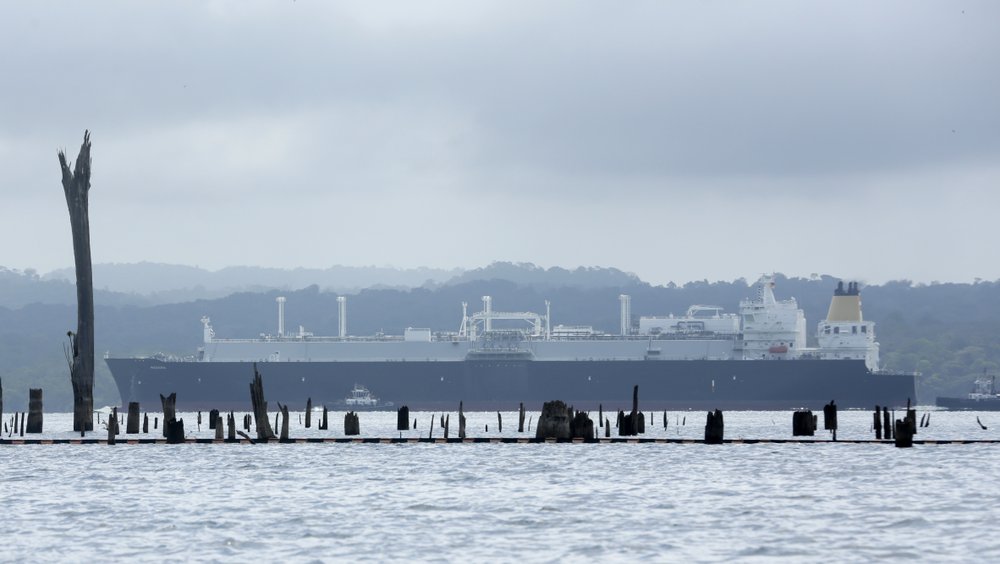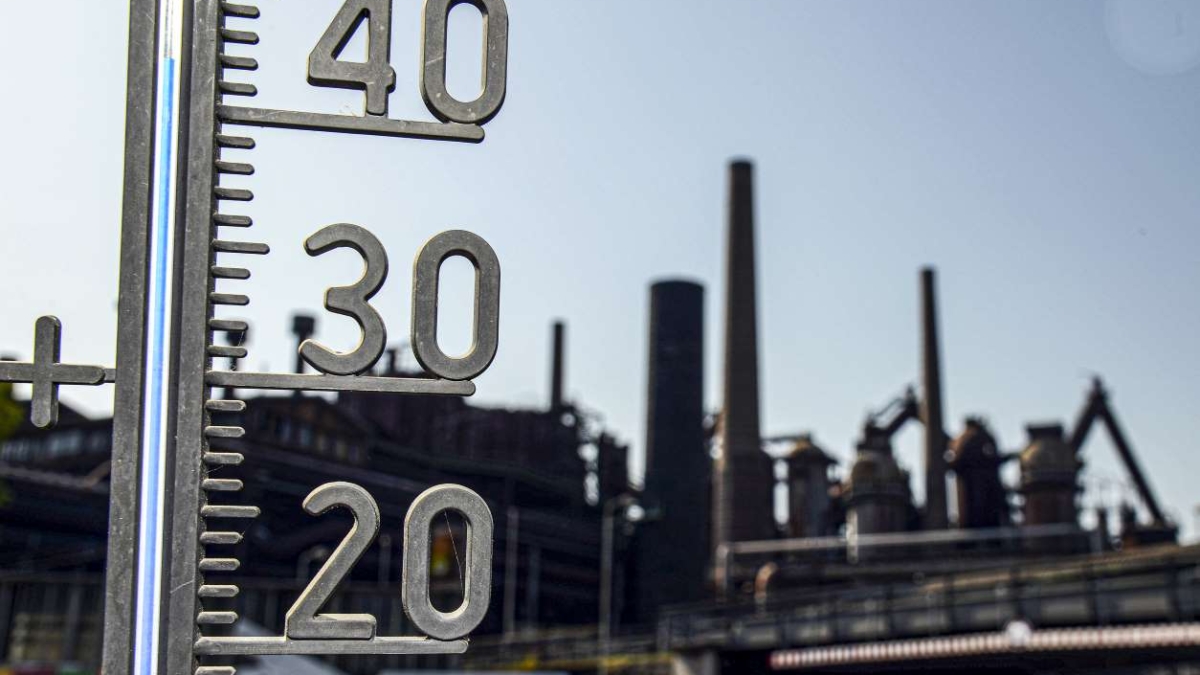Water shortages dog Panama Canal, 20 years after its transfer – “It really has been the driest dry season we’ve had in the history of the canal”

31 December 2019 (DW) – The Panama Canal’s handover from the United States 20 years ago has been marked in Panama amid water supply worries. Managers say less rainfall due to climate change has depleted the inter-ocean conduit’s Gatun Lake.
President Laurentino Cortizo hoisted a giant Panamanian flag outside Canal headquarters Tuesday as its operators mused over low water levels — compounded by its expansion in 2016 into a third lane to serve mega ships transiting between Asia and the US eastern seaboard.
Recurrent droughts left the 80 kilometer-long (50 mile) system of locks with only 3 billion cubic meters of water this past year, instead of the 5.2 billion cubic meters needed, according to the canal authority (ACP).
Gatun Lake, which sustains the waterway and provides local drinking water, is also losing volume by evaporation, with its temperature up 1.5° Celsius in the past decade.
Administrator Ricaurte Vasquez on Tuesday blamed climate change, drawing attention to Panama’s costly ideas of desalinating seawater or building reservoirs.

Currently, the region’s rainfall deficit is 27% compared with the average, said the ACP.
Already, canal officials fear that ships transiting Pacific-Atlantic waters across the narrow Central American isthmus will opt for other global routes, such as Egypt’s Suez Canal or Arctic transits north of Russia or Canada as polar ice melts.
The Panama Canal handled 451 million tons of goods in 2019, representing 3.5% of world trade — down from 5% previously.
Consolidation of Asian economies, amid US-China trade standoffs, had also put the canal’s prospects in difficulty said Horacio Estribi, an adviser to Panama’s economy minister. [more]
Water shortages dog Panama Canal, 20 years after its transfer

Drought hits Panama Canal shipping, highlights climate fears
By Juan Zamorano and Arnulfo Franco
30 April 2019
GATÚN, Panama (AP) — An intense drought related to this year’s El Nino phenomenon has precipitously lowered the level of Panama’s Gatun Lake, forcing the country’s Canal Authority to impose draft limits this week on ships moving through the waterway’s recently expanded locks.
The restrictions on how deep the vessels can reach below the surface means large ships, primarily from the United States and China, must pass through with less cargo, which translates into lower revenue for the voyages. The driest period in memory for the canal basin is also hitting small indigenous villages that depend on tourism along the tributaries of the inter-oceanic passage.
The economic hit to canal operators stands to be minor — an estimated $15 million this year, compared with the $2.5 billion in revenue generated in 2018. But the drought and the resulting restrictions highlight the difficulties Panama faces in satisfying increased demand for fresh water to feed the canal while irrigating fields and keeping the taps flowing in the capital as climate change threatens more extreme weather events.
“This year I do not think there will be problems with drinking water … due to the resources we have,” Steve Paton, who heads the long-term climate monitoring program at the Smithsonian Tropical Research Institute, said, referring to an accumulation of rainfall from the last rainy season.

“As for the future, it is difficult to forecast,” Paton continued. “But we are observing in the canal area that climatic events are becoming increasingly extreme. … The biggest droughts and the eight or nine largest storms have occurred in the last 20 years, in the same way that 2014 to 2016 were the driest years in the canal’s history.”
El Niño is a recurring phenomenon in which warm ocean temperatures in the Pacific lead to drier than usual conditions in some areas and wetter in others.
Carlos Vargas, vice president of environment and water for the Canal Authority, said recently that Gatun — one of the largest artificial lakes in the world, with an area of 168 square miles (436 square kilometers) — was 4.6 feet (1.4 meters) below normal levels for this time of year. It has dropped more than a half foot (0.2 meters) since early April. A smaller lake that also supplies the waterway, Alajuela, was 7.2 feet (2.2 meters) below usual.
“These low levels in the Panama Canal are the product of four or five months of almost zero precipitation,” Vargas told The Associated Press. “It really has been the driest dry season we’ve had in the history of the canal. The flow of rivers to the lake is down 60 percent.” [more]
Drought hits Panama Canal shipping, highlights climate fears

